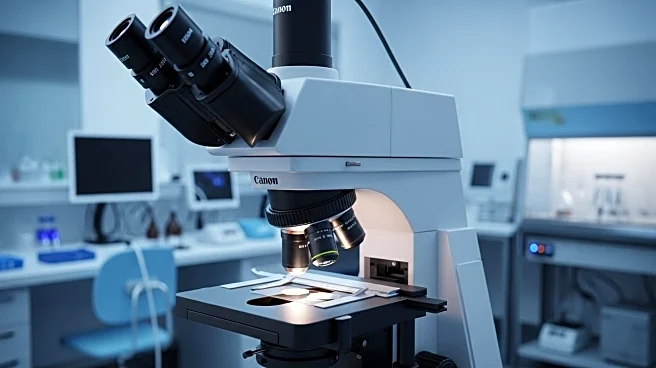What is the story about?
What's Happening?
The thumb test is a simple maneuver that can potentially indicate an increased risk for aortic aneurysms, according to cardiologists. The test involves laying the thumb across a flat palm; if the thumb extends beyond the edge of the palm, it may suggest joint laxity associated with connective tissue diseases like Marfan syndrome and Ehlers-Danlos syndrome. These conditions are linked to a higher risk of aneurysms due to weakened blood vessel walls. However, experts caution that the thumb test is not a diagnostic tool and should not replace formal medical evaluation or imaging-based screening. While a positive thumb test may indicate a connective tissue condition, it does not confirm the presence of an aneurysm. Imaging remains the gold standard for diagnosing aneurysms, and medical guidelines recommend testing based on specific risk factors.
Why It's Important?
Understanding the limitations of the thumb test is crucial for preventing unnecessary anxiety and ensuring proper medical evaluation. While the test can prompt discussions about potential connective tissue disorders, it should not be relied upon for diagnosing aneurysms. Misinterpretation of the test results could delay appropriate screening and surveillance, particularly in high-risk individuals. Cardiologists emphasize the importance of evidence-based screening and imaging to accurately diagnose aneurysms. This approach helps identify individuals who may benefit from further testing and monitoring, thereby improving patient outcomes and reducing the risk of complications associated with undiagnosed aneurysms.
What's Next?
Individuals with a positive thumb test are advised to consult their doctors to discuss potential underlying connective tissue diseases and the need for additional testing. Physicians may conduct a more comprehensive physical exam and order imaging scans to assess the risk of aneurysms. Those with features suggestive of connective tissue disorders or a family history of aneurysms should consider formal evaluation and imaging of the aorta. Routine medical visits can provide context for isolated findings in otherwise healthy individuals. Cardiologists recommend discussing risk factors such as age, smoking, high blood pressure, and family history with healthcare providers to determine appropriate screening and monitoring strategies.
Beyond the Headlines
The thumb test highlights the importance of awareness and early detection of connective tissue disorders, which can have broader implications for cardiovascular health. While the test itself is not a reliable screening tool, it can initiate valuable conversations between patients and healthcare providers about potential risk factors and the need for comprehensive evaluation. This proactive approach can lead to timely interventions and improved management of conditions associated with aneurysms, ultimately enhancing patient care and reducing the burden of cardiovascular diseases.
AI Generated Content
Do you find this article useful?













